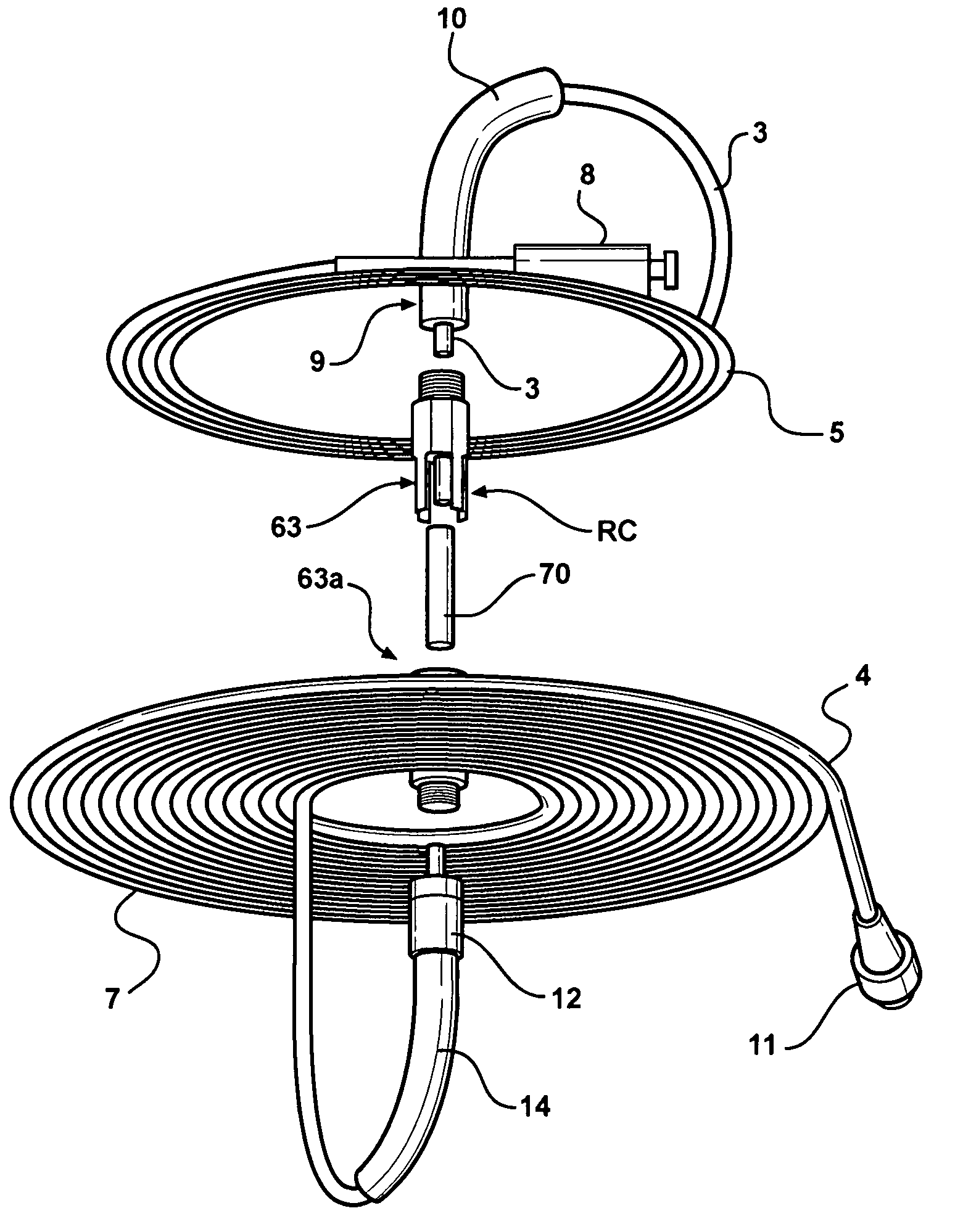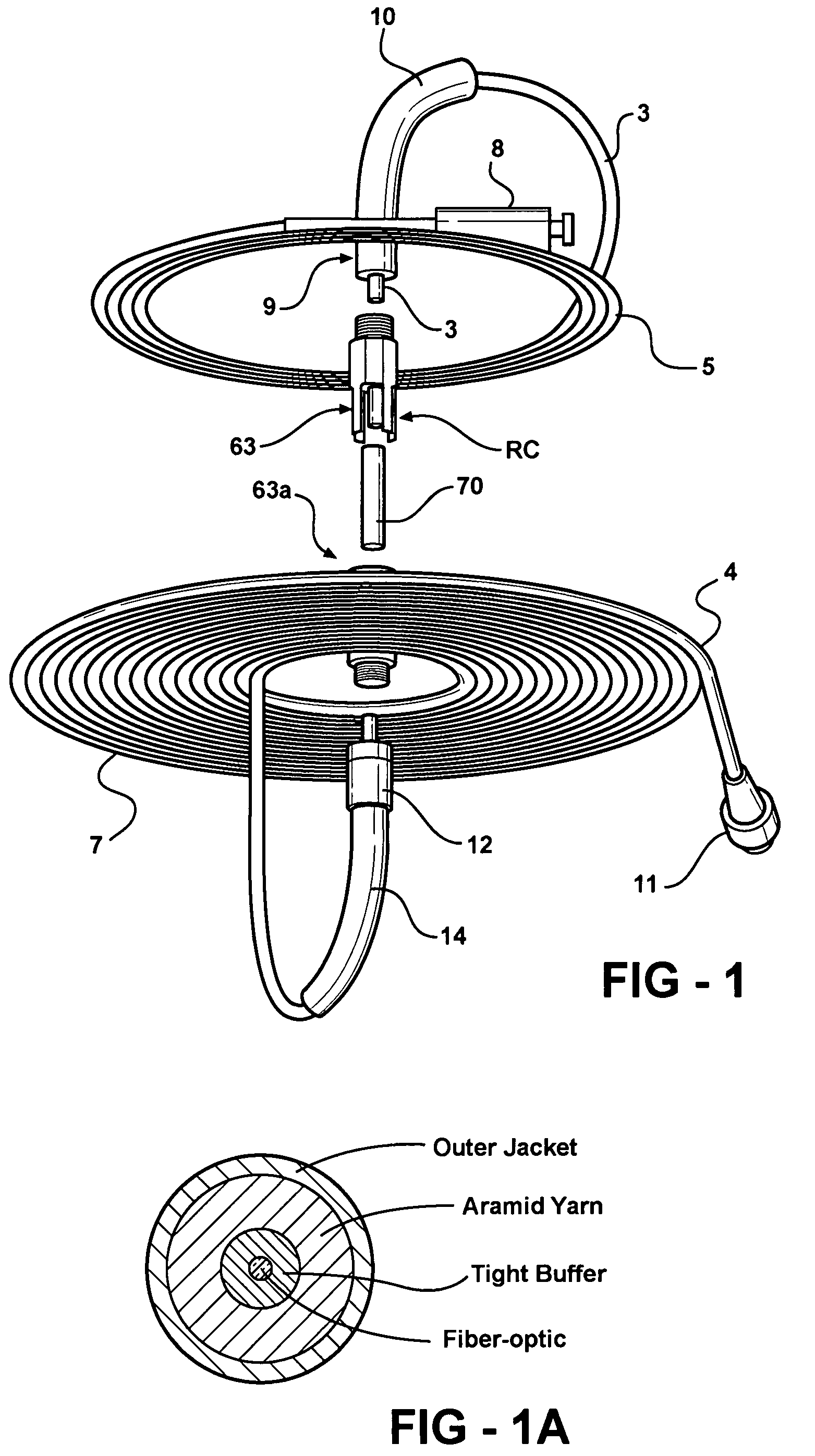Fiber optic cable protective apparatus
a protective device and fiber optic cable technology, applied in the field of fiber optic cable protective devices, can solve the problems of damaging the fiber, adversely affecting the ability of the fiber optic cable to transmit an optical signal without undue attenuation, and undesirable storage of the fiber optic cable in such a bag
- Summary
- Abstract
- Description
- Claims
- Application Information
AI Technical Summary
Benefits of technology
Problems solved by technology
Method used
Image
Examples
Embodiment Construction
[0029]Apparatus constructed in accordance with the preferred embodiment of the invention comprises a casing 1 (FIGS. 2 and 3) formed from rigid plastic material, such as polycarbonate or that used in the manufacture of so-called jewel cases for compact discs and the like. The casing is adapted to contain, protect, and enable control to be exerted over two separate and independent lengths of coil able material, such as two conventional, fiber optic cables 3 and 4. As shown in FIG. 1 the cable 3 is a single simplex cable forming a first coil 5 and the cable 4 is a single simplex cable forming a second coil 7. The radius of each coil is at least as great as the minimum bending radius of the respective cables.
[0030]Each cable has, as is conventional, an axially and longitudinally extending glass core commonly referred to as a fiber which is capable of transmitting light energy the full length of the cable, the fiber being encircled by a tight buffer, aramid yarn, and an outer jacket for...
PUM
 Login to View More
Login to View More Abstract
Description
Claims
Application Information
 Login to View More
Login to View More - R&D
- Intellectual Property
- Life Sciences
- Materials
- Tech Scout
- Unparalleled Data Quality
- Higher Quality Content
- 60% Fewer Hallucinations
Browse by: Latest US Patents, China's latest patents, Technical Efficacy Thesaurus, Application Domain, Technology Topic, Popular Technical Reports.
© 2025 PatSnap. All rights reserved.Legal|Privacy policy|Modern Slavery Act Transparency Statement|Sitemap|About US| Contact US: help@patsnap.com



